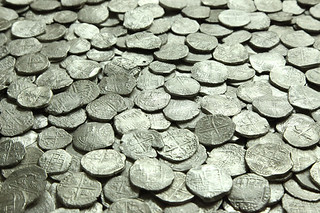
PREV ARTICLE
NEXT ARTICLE
FULL ISSUE
PREV FULL ISSUE
FINDING SHIPWRECKS IS GETTING EASIER AND HARDER
David Sundman forwarded this New York Times article on how finding shipwrecks is getting easier due to advances in technology, and
leading to more and more clashes between treasure hunters, archaeologists and governments. Thanks! -Editor
Four hundred years later, that shipwreck has become one of the latest to land in a legal quagmire over who should have the rights to historic artifacts trapped under the sea. This one involves the United Nations, the United States Department of Homeland Security, the government of Panama and Americans accused of being pirates. At issue is whether private companies should be able to claim and profit from historic treasures. Those questions are of particular interest to businesses in South Florida at a time when technology is making it easier to find and recover sunken loot. The National Oceanic and Atmospheric Administration estimates that there are over 1,000 shipwrecks in the Florida Keys alone. In the case of the San José booty, commercial treasure hunters, financed in part by an adventure entrepreneur who runs tours to the Titanic, spent over $2 million and 10 years recovering portions of the treasure, only to see their permits questioned and bounty confiscated. “They called us thieves, looters, plunderers and pirates,” said Dan Porter, a Florida captain who led the expedition to find the San José. “That’s an insult,” he continued. “I hold this work in the highest regard.” But the industry is engaged in a battle with academic marine archaeologists and Unesco, the Paris-based United Nations agency that tries to protect cultural treasures around the world. Critics say buried coins and loot should be studied and preserved in a museum, not sported around an investor’s neck. “Treasure hunters are to maritime archaeologists what astrologers are to astronomers,” said Filipe Castro, a nautical archaeologist at Texas A & M University. Treasure hunters are hoping for a compromise. “You should look at these more like an airplane crash or car crash,” said James J. Sinclair, a marine archaeologist hired by IMDI to evaluate the finds. “You don’t leave them at the side of the road and preserve them forever.” To read the complete article, see:

Wayne Homren, Editor The Numismatic Bibliomania Society is a non-profit organization promoting numismatic literature. See our web site at coinbooks.org. To submit items for publication in The E-Sylum, write to the Editor at this address: whomren@gmail.com To subscribe go to: https://my.binhost.com/lists/listinfo/esylum All Rights Reserved. NBS Home Page Contact the NBS webmaster 
|
